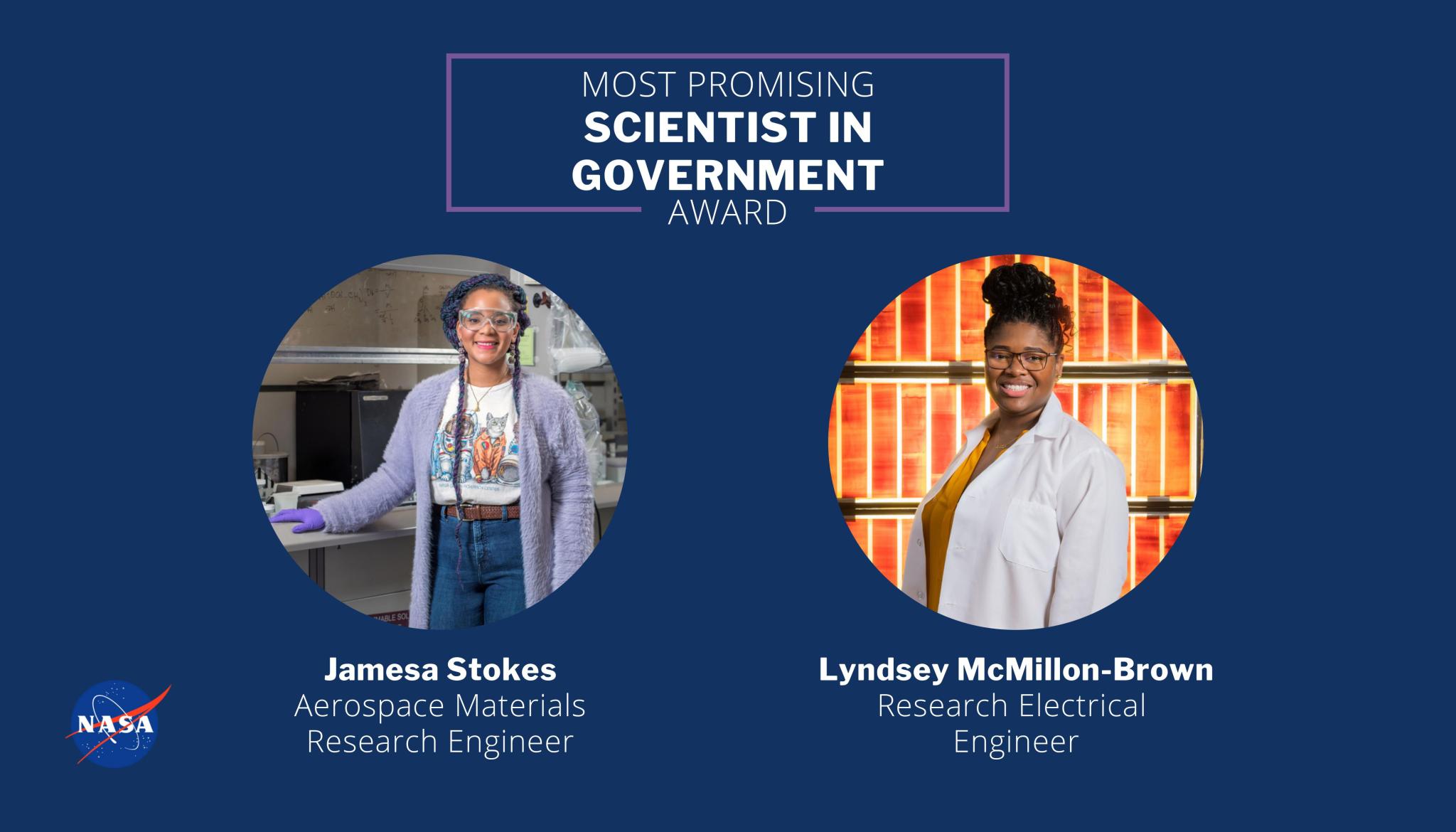Both employees were recognized for their outstanding achievements in engineering.
Two engineers from the National Aeronautics and Space Administration (NASA) received the Most Promising Scientist in Government Award, a selection made by a committee of scientific and technical leaders and supporters of the 15 ABET-accredited historically Black colleges at the 2023 Black Engineer of the Year Awards (BEYA) in Science, Technology, Engineering, and Mathematics (STEM) conference held in February.
Research electrical engineer Dr. Lyndsey McMillon-Brown, and aerospace materials research engineer Dr. Jamesa Stokes, were recipients of the award that recognizes a scientist, with three to ten years of work service, on future scientific contributions in their field.
McMillon-Brown supports exploration efforts through the design and development of more affordable, efficient, and lightweight solar cells for use on Earth and in space: a sustainable invention that minimizes the use of fossil fuels and its emissions by using the energy emitted by the sun.
Almost all missions need some solar power, including the most recent one, Artemis. But developing solar cells for space poses additional challenges. McMillon-Brown and her team at NASA’s Glenn Research Center in Cleveland are developing a new solar cell made from Perovskite, a flexible material that is easy to produce. She hopes it will provide more reliable power on the Moon, Mars and beyond.
“I’m working in a field where I’m doing things no one has done before,” said McMillon-Brown. “There’s no answer in the back of the book; we’re laying the path as we walk down it, and that’s challenging. But it’s also very fun and really rewarding.”
Stokes, who began her journey with NASA through a graduate fellowship for research at NASA Glenn, believes that working for the global leader in space means tackling challenges for the benefit of society.
Stokes tests and studies the behavior of advanced materials in extreme space environments to understand how they could protect the lives of astronauts and spacecraft. She also works on materials to improve fuel efficiency for commercial jet engines as well as materials for earth-based flight systems.
Her advice for someone considering a STEM career?
“There is no required path to becoming a scientist or engineer nor is there one way a scientist or engineer is supposed to act or look,” she said. “Never let anyone discourage you from pursuing what you like and remember that you can always be more than whatever societal conventions envision your future to be.”
By Vahely Vega





























